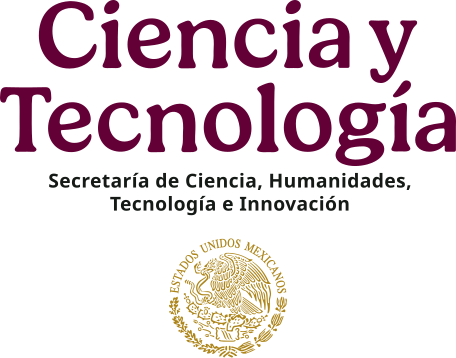El impacto de la migración laboral en el desarrollo del capital humano
DOI:
https://doi.org/10.33679/rmi.v1i1.2190Keywords:
migración laboral, capital humano, desarrollo, políticas migratorias, Europa.Abstract
El papel creciente de la migración laboral es una de las tendencias más notables en los flujos migratorios internacionales. Esta migración se ha convertido en un factor importante para el desarrollo económico y es fuente de una creciente interdependencia entre países y regiones en el mundo global actual. Su impacto se siente tanto en los países de origen de los migrantes como en los de destino, afectando principalmente al capital humano de ambos países. Este artículo sistematiza los efectos positivos y negativos de la migración laboral con respecto al capital humano, al mismo tiempo que propone un sistema de indicadores que caracterizan tales efectos. Se presta especial atención al análisis de las políticas relacionadas con este tipo de migración. Esta investigación argumenta que tanto los países de origen como los de destino deben llevar a cabo una gestión eficaz y justa de la migración laboral para aprovechar al máximo de sus beneficios a nivel internacional.
References
Adler, S. (1977). International migration and dependence. Westmead, ENG: Saxon House.
Aleshkovskii, I. A., Grebenyuk, A. A., Kravets, V. A., & Maksimova, A. S. (2019). Foreign Migrants in the Russian Labor Market: Assessment of the Total Number and Contribution to Russia’s GDP. Economic and Social Changes: Facts, Trends, Forecasts, 12(6), 197-208.
Artal-Tur, A., Peri, G., & Requena-Silvente, F. (Eds.). (2014). The Socio-Economic Impact of Migration Flows. Cham, CH: Springer International Publishing.
Becker, G. (1962). Investment in Human Capital: A Theoretical Analysis. Journal of Political Economy, 70(5 Part 2), 9-49.
Bodvarsson, Ö. B., & Hou, J. W. (2010). The Effects of Aging on Migration in a Transition Economy: The Case of China (Discussion Paper No. 5070). Retrieved from http://ftp.iza.org/dp5070.pdf
Bourdieu, P. (2002). Forms of capital. Economic Sociology, 3(5), 60-74.
Calenda, D. (Ed.). (2016). Case studies in the international recruitment of nurses: promising practices in recruitment among agencies in the United Kingdom, India, and the Philippines. Bangkok, TH: International Labour Organization. Retrieved from https://www.ilo.org/wcmsp5/groups/public/---asia/---ro-bangkok/documents/publication/wcms_459869.pdf
Carling, J. (1996). International Labour Migration: Consequences for Countries of Origin. (Occasional Paper No. 21). Retrieved from https://www.academia.edu/2961115/International_labour_migration_Consequences_for_countries_of_origin
Cervantes, M., & Guellec, D. (2002). The brain drain: Old myths, new realities. OECD Observer, 230 (1), 40-42. Retrieved from https://www.oecd-ilibrary.org/economics/oecd-observer/volume-2002/issue-1_observer-v2002-1-en
Chiswick, B. (1978). The Effect of Americanization on the Earnings of Foreign-born Men. The Journal of Political Economy, 86(5), 897-921.
Chiswick, B. R., & Miller, P. W. (2014). International Migration and the Economics of language (IZA Discussion Papers No. 7880). Retrieved from https://www.econstor.eu/bitstream/10419/90104/1/dp7880.pdf
Coleman, J. (2001). Social and Human Capital. Social Sciences and Contemporary World, 3,122-139.
Denison, E. (1968). Contribution of Knowledge to Economic Growth: An Inter-Country Analysis. Moscow, RU: Progress.
Dinkelman, T., & Mariotti, M. (2014). What are the Long Run Effects of Labor Migration on Human Capital? Evidence from Malawi (NBER Working Paper Series No. 22049). Retrieved from https://www.parisschoolofeconomics.eu/docs/ydepot/semin/texte1314/WHA2014TAR.pdf
Dustmann, C., & Kirchkamp, O. (2002). The Optimal Migration Duration and Activity Choice After Re-migration. Journal of Development Economics, 67(2), 351-372.
Edwards, A. C, & Ureta, M. (2003). International Migration, Remittances, and Schooling: Evidence from El Salvador. Journal of Development Economics, 72(2), 429-461.
Federal State Statistics Service (Rosstat). (2019). Labor and employment in Russia. Moscow: Rosstat. Retrieved from https://rosstat.gov.ru/storage/mediabank/Trud_2019.pdf
Glazev, S. U., & Lvov, D. S. (1985). Theoretical and applied aspects of scientific and technological progress management. Economics and mathematical methods, (1), 793- 804.
Granovetter, M. (1985). Economic Action and Social Structure: The Problem of Embeddedness. American Journal of Sociology, 91(3), 481-510. Retrieved from https://www.jstor.org/stable/2780199?seq=1
Grebenyuk, A. (2017). Labour migration and economic development: consequence and system of indicators. Moscow, RU: Creative Economy.
Hildebrandt, N., & McKenzie, D. (2005). The Effects of Migration on Child Health in Mexico. (World Bank Policy Research Paper No. 3573). https://doi.org/10.1596/1813-9450-3573
International Organization for Migration (IOM). (2003). Migration in a Globalized World. Geneva, CH: Author. Retrieved from https://www.iom.int/migration-globalized-world-2003
Jasso, G., & Rosenzweig, M. (1982). Estimating the Emigration Rates of Legal Immigrants Using Administrative and Survey Data: The 1971 Cohort of Immigrants to the United States. Demography, 19 (3), 279-290.
Kahn, K., Collison, M., Tollman, S., Wolff, B., Garenne, M., & Clark, S. (2003, June 4-7). Health Consequences of Migration: Evidence from South Africa’s Rural Northeast (Agincourt). Paper presented at the Conference on African Migration in Comparative Perspective (pp. 1-26). Johannesburg, SA.
Kirdar, M. (2007). Labor Market Outcomes, Capital Accumulation and Return Migration: Evidence from Immigrants in Germany. Retrieved from http://mpra.ub.unimuenchen.de/2028
Klugman, J. (2009). Human Development Report 2009. Overcoming Barriers: Human Mobility and Development. UNDP-HDRO Human Development Reports. Retrieved from http://hdr.undp.org/sites/default/files/reports/269/hdr_2009_en_complete.pdf
Kolosnitsyna, M., & Suvorova, I. (2005). International Labor Migration: Theoretical Bases and Policy of Regulation. Economic Journal,(4), 548-553.
Kommersant. (2017, August 12). A migrant from nature. Who is going to work in Russia now. Author. Retrieved from https://www.kommersant.ru/doc/3380376
Migration Advisory Committee. (2020). Review of the Shortage Occupation List 2020. Retrieved from https://assets.publishing.service.gov.uk/government/uploads/system/ uploads/attachment_data/file/927352/SOL_2020_Report_Final.pdf
Olimova, S. (2010). The Impact of Labour Migration on Human Capital: The Case of Tajikistan. Revue européenne des migrations internationales, 26(3), 181-197.
Popescu, C., Diaconu, L., & Maxim, A. (2014). The Impact of Migration on Human Capital and Economic Development. The Proceedings of the International Conference Communication, Context, Interdisciplinary, 3, 32-41.
Rothgang, M., & Schmidt, C. (2003). The New Economy, the Impact of Immigration, and the Brain Drain. Amsterdam, NL: Elsevier Science.
Ryazantsev, S. V., & Grebenyuk, A. A. (2008). Potential of the return migration to Russia from the CIS and Baltic countries. Population, 2(40), 104-112.
Schultz, T. W. (1961). Investment in Human Capital. The American Economic Review, 51(1), 1-17.
Schultz, T. W. (1981). Investing in People: the Economics of Population Quality. Berkeley, CA: University of California Press.
Schwab, K. (2016). Die Vierte Industrielle Revolution. World Economic Forum. Munich, GER: Pantheon Verlag.
Sjaastad, L. (1962). The Costs and Returns of Human Migration. Journal of Political Economy, 70(5 Part 2), 80-93.
Statistisches Bundesamt. (2019). Population [Data file]. Retrieved from https://www.destatis.de/EN/Themes/Society-Environment/Population/_node.html
Strovsky, L., & Jiang, J. (2008). Role of Overseas Chinese in China’s economic development. Bulletin USTU-UPI. Series: Economics and Management, 2, 64-72.
Taran, P., Ivakhnyuk, I., Pereira Ramos, M. d. C., & Tanner, A. (2009). Economic migration, social cohesion and development: Towards an integrated approach. Strasbourg, FR: Council of Europe Publishing.
United Nations (UN). (2013). International Migration Policies: Government Views and Priorities. New York, NY: Author. Retrieved from https://www.un.org/en/development/desa/population/publications/pdf/policy/InternationalMigrationPolicies2013/Report% 20PDFs/z_International%20Migration%20Policies%20Full%20Report.pdf
United Nations (UN). (2017). International Migration Report 2017. Highlights. New York, NY: Author. Retrieved from https://www.un.org/development/desa/publications/international-migration-report-2017.html
Vargas-Silva, C., & Fernández-Reino, M. (2019). Migrants and Housing in the UK: Experiences and Impacts (Migration Observatory Briefing). United Kingdom: University of Oxford. Retrieved from https://migrationobservatory.ox.ac.uk/wp-content/uploads/2016/04/Briefing-Migrants-and-Housing-in-the-UK-Experiences-and-Impacts.pdf
World Bank. (2018). Migration and Remittances: Recent Developments and Outlook. Retrieved from https://openknowledge.worldbank.org/handle/10986/30280
Yang, D. (2008). International migration, Human Capital and Entrepreneurship: Evidence from Philippine Migrant’s Exchange Rate Shocks. The Economic Journal, 118 (528), 591-630.
Yormirzoyev, M., & Mittelhammer, R. (2015). Migration, Remittances and Economic Growth: An Empirical Study in the case of Former Soviet Republics. Proceedings of the XVI April International Academic Conference. Moscow.
Zagulyaev, D. G. (2010). The Concept of regulation of the international labor market of employees. Bulletin of SUSU, (7), 4-10.
Downloads
Published
Issue
Section
License
Copyright (c) 2021 Migraciones Internacionales

This work is licensed under a Creative Commons Attribution-NonCommercial-NoDerivatives 4.0 International License.
Authors publishing work in this journal agree to the following conditions:
Authors retain copyright and assign first publication rights to the journal Migraciones Internacionales (MI), with the texts registered under an Attribution-NonCommercial-NoDerivatives 4.0 International Creative Commons license (CC BY-NC-ND 4.0), which allows third parties to use published material provided they give credit to the authors and acknowledge this journal as the first publisher.
They authorize the reproduction, publication, translation, communication, and transmission of their paper and all accompanying material, publicly and in any form and by any means; its public distribution in as many copies as required; and public communication thereof in any form, including making it available to the public through electronic means or any other technology, and solely for dissemination and scientific, cultural, and non-commercial purposes.
Authors may enter into further independent contractual agreements for the non-exclusive distribution of the version of the paper published in this journal (for instance, to include it in an institutional repository or personal webpage, or publish it in a book), provided it is not for commercial purposes and they clearly state that the work was first published in Migraciones Internacionales (MI) [and add the corresponding bibliographical record: Author/s (Year). Title of paper. Migraciones Internacionales, volume (number), pp. doi: xxxx].
To that end, authors must submit the form assigning ownership of first publication rights, duly completed and signed. This document is to be uploaded in PDF format as a complementary file on the OJS platform.
This work is released under an Attribution-NonCommercial-NoDerivatives 4.0 International Creative Commons license (CC BY-NC-ND 4.0)..












